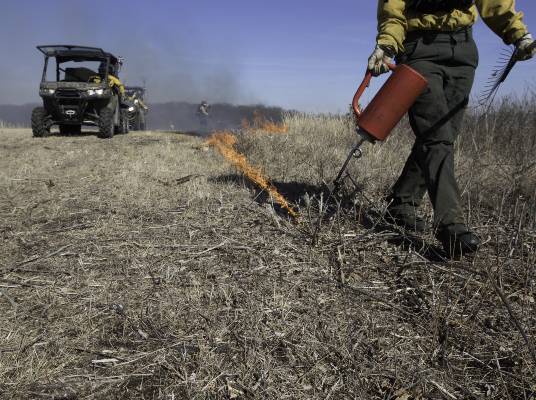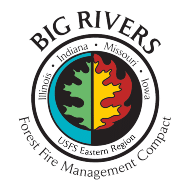Prescribed Fire

Wildfires and prescribed fires are very different in definition and purpose, but they are both fueled by vegetation. For that reason, they may be collectively referred to as natural cover fires. Prescribed fire is a fire ignited in natural cover fuels under specified environmental conditions such as temperature, humidity, wind speed and fuel moisture – a prescription. The prescription results in a fire that produces the intensity of heat and rate of spread needed to meet management objectives, while confining the fire to a predetermined area.
Fire has always been a natural occurrence to which many native plants and natural communities have adapted. Some natural communities actually depend on fire for their existence. Prairies, glades, savannas, woodlands and certain wetlands are examples of natural communities that require occasional fires for maintenance.
Prescribed fires are planned well in advance and have the necessary controls, equipment and personnel in place to contain them. Prescribed fires are conducted to achieve specific, predetermined resource management goals and require a great deal of advance planning by trained personnel. Preparations must be made to ensure control and the fire is ignited only when fuel and weather conditions are right to accomplish the goals of the burn while maintaining control.
Prescribed Fire Councils
Prescribed fire councils are groups of landowners, organizations, land managers and agencies interested in the safe and effective application of prescribed fire to manage natural communities. Prescribed fire councils are state-wide groups that promote the use of prescribed fire as a land management tool. Prescribed burn associations are county-level or regional groups that share knowledge, training and equipment to carry out prescribed fires on the ground; essentially neighbor-helping-neighbor. Prescribed burn associations usually charge dues which enable them to buy equipment to safely conduct burns on their members’ property.
For more information, here are links to Prescribed Fire Councils in the Big Rivers Compact:
